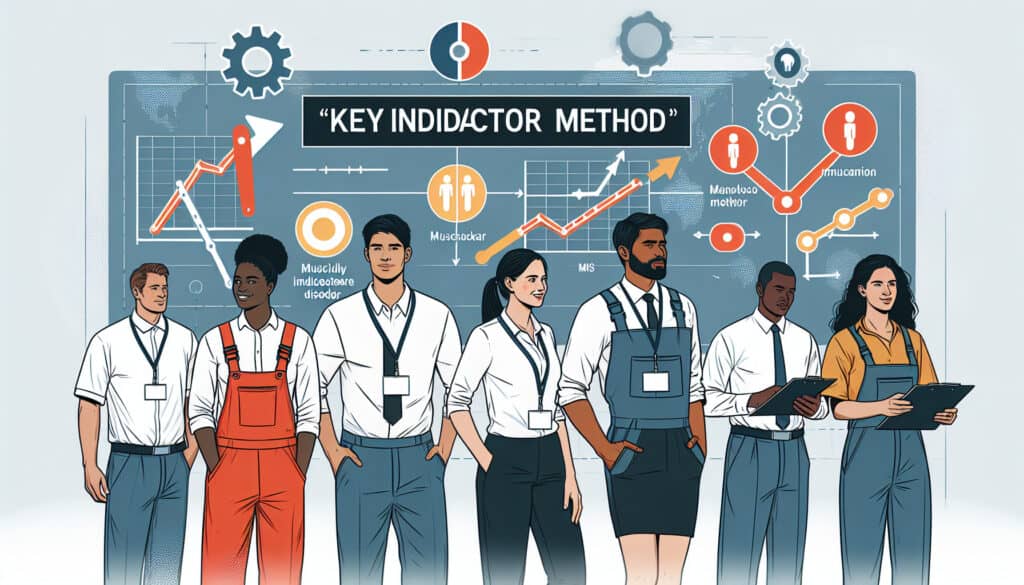Valutare il rischio di disturbi muscoloscheletrici associati alle attività di movimentazione manuale.
- Metodologie: Clienti e marketing, Economia, Progettazione del prodotto
Metodo degli indicatori chiave (KIM)

Metodo degli indicatori chiave (KIM)
- Miglioramento continuo, Ergonomia, Fattori umani, Ingegneria dei fattori umani (HFE), Produzione snella, Miglioramento dei processi, Analisi del rischio, Gestione del rischio, Sicurezza
Obiettivo:
Come si usa:
- Un metodo per valutare il rischio di disturbi muscoloscheletrici associati a compiti di sollevamento, trasporto, spinta e trazione. Utilizza una serie di indicatori chiave per attribuire un punteggio al rischio e identificare le aree da migliorare.
Professionisti
- Fornisce un metodo strutturato e sistematico per valutare i rischi legati alla movimentazione manuale; può essere utilizzato da persone con competenze ergonomiche limitate.
Contro
- Può non essere accurata o dettagliata come una valutazione ergonomica completa; può non identificare tutti i fattori di rischio.
Categorie:
- Ergonomia, Gestione del rischio
Ideale per:
- Valutare il rischio delle attività di movimentazione manuale in un luogo di lavoro per stabilire le priorità di ulteriori interventi. valutazione ergonomica.
Il Metodo degli Indicatori Chiave (KIM) è particolarmente adattabile in ambienti in cui le attività fisiche sono parte integrante, come i magazzini, l'edilizia, la sanità e le industrie manifatturiere. Tipicamente implementato durante la fase di progettazione dei flussi o degli spazi di lavoro, il KIM prevede la collaborazione tra vari soggetti interessati, tra cui responsabili della sicurezza, ergonomisti, ingegneri e dipendenti che svolgono attività manuali, assicurando così che diverse prospettive contribuiscano al processo di valutazione. I dati generati dal KIM possono essere utilizzati per indirizzare gli interventi, riducendo i rischi ergonomici prima che si traducano in infortuni. Il suo approccio sistematico consente alle organizzazioni che non dispongono di competenze specialistiche in materia di ergonomia di identificare e affrontare in modo efficiente i potenziali pericoli, utilizzando criteri di punteggio stabiliti, che semplificano il processo decisionale relativo agli interventi ergonomici. Essendo uno strumento scalabile, il KIM può essere utilizzato per nuovi progetti o per operazioni esistenti, consentendo una rivalutazione periodica per mantenere gli standard di sicurezza sul posto di lavoro. Le applicazioni del mondo reale possono riguardare la valutazione della sicurezza delle procedure di sollevamento in un magazzino o la valutazione dell'ergonomia della movimentazione dei pazienti nelle strutture sanitarie, assicurando che i miglioramenti siano in linea con i principi ergonomici stabiliti e promuovendo la salute e la produttività dei lavoratori. Coinvolgere i dipendenti nel processo di valutazione dei rischi tramite KIM favorisce una cultura della sicurezza e della consapevolezza, in quanto le persone direttamente coinvolte nelle attività manuali possono fornire preziosi input sulle loro esperienze, portando a soluzioni ergonomiche più efficaci e accettate.
Fasi chiave di questa metodologia
- Identificare i compiti di movimentazione manuale svolti sul posto di lavoro.
- Determinare la frequenza e la durata di ogni attività di movimentazione manuale.
- Valutare le caratteristiche del carico, compresi peso, forma e dimensioni.
- Valutare l'ambiente di lavoro, compresi lo spazio, le condizioni delle superfici e la disponibilità di attrezzature.
- Attribuire un punteggio a ciascun compito in base a indicatori chiave predefiniti, come la postura, la forza e la ripetizione.
- Date la priorità ai compiti in base ai punteggi per identificare le aree ad alto rischio.
- Analizzare i risultati del punteggio per identificare i fattori di rischio specifici e le opportunità di miglioramento.
- Sviluppare un piano di interventi ergonomici per ridurre i rischi identificati.
Suggerimenti per i professionisti
- Incorporare metodi di raccolta dei dati in tempo reale per migliorare l'accuratezza delle valutazioni del rischio, facendo leva su indossabile tecnologia o sensori per l'analisi dinamica dei compiti.
- Utilizzare un approccio multidisciplinare, collaborando con ergonomisti, ingegneri e lavoratori per convalidare i punteggi KIM e identificare strategie pratiche di miglioramento.
- Aggiornare regolarmente gli indicatori chiave in base al feedback e all'evoluzione della ricerca ergonomica per garantire che la metodologia rimanga pertinente ed efficace nella valutazione dei rischi.
Leggere e confrontare diverse metodologie, raccomandiamo il
> Ampio archivio di metodologie <
insieme ad altre 400 metodologie.
I vostri commenti su questa metodologia o ulteriori informazioni sono benvenuti su sezione commenti qui sotto ↓ , così come tutte le idee o i link relativi all'ingegneria.
Contesto storico
1986
(se la data non è nota o non è rilevante, ad esempio "meccanica dei fluidi", viene fornita una stima approssimativa della sua notevole comparsa)

Post correlati
Gestione delle operazioni di produzione (MOM)
Sistema di esecuzione della produzione (MES)
Piano di controllo della produzione
Test manuali
Schede di valutazione della movimentazione manuale (MAC)
ManTRA (Strumento di valutazione dei rischi delle attività manuali)